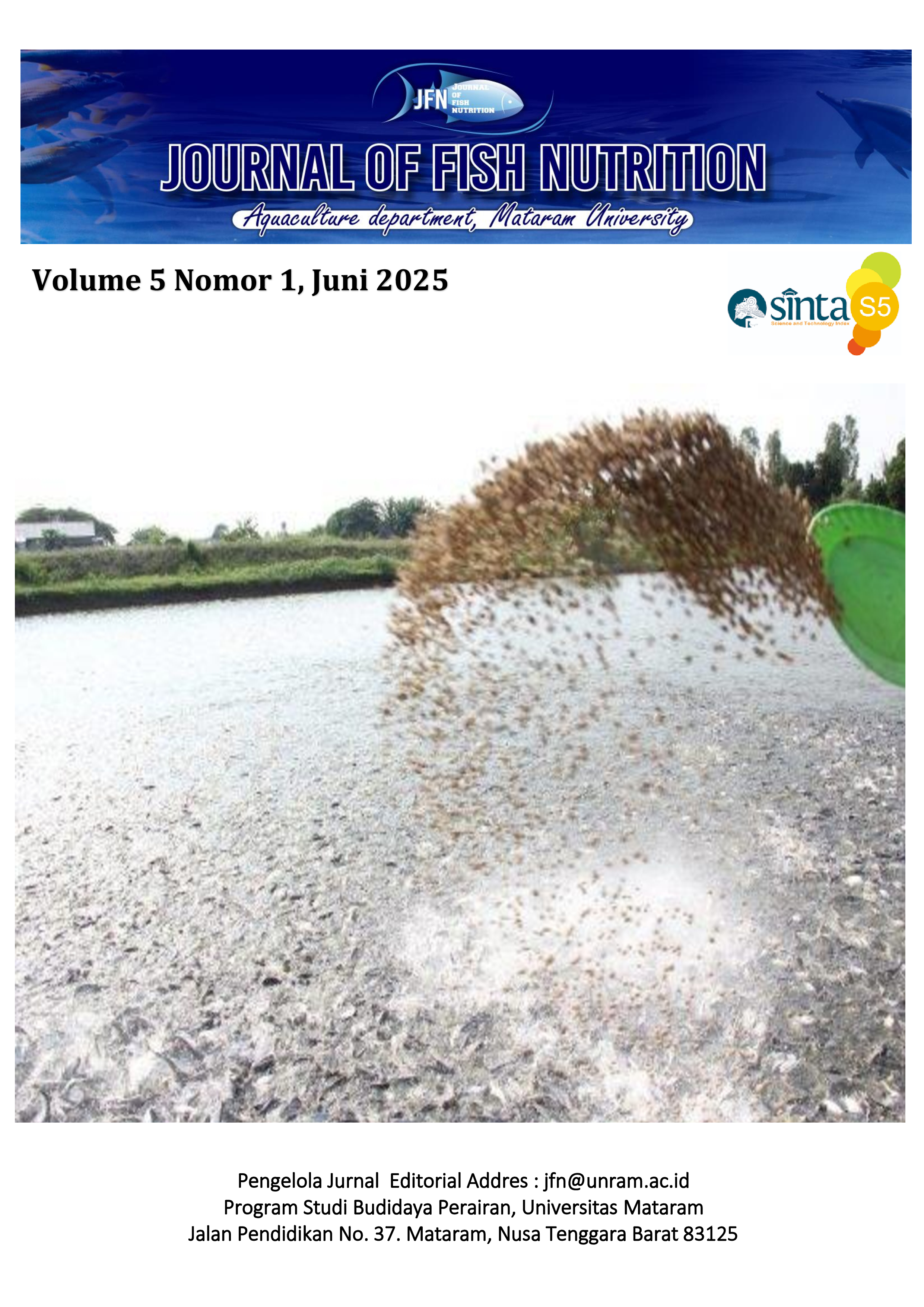THE ROLE OF BINDERS IN FEED FORMULATION FOR MANGROVE CRAB (SCYLLA SPP.) AQUACULTURE: A REVIEW OF SYNTHETIC, NATURAL, AND ECO-BASED INNOVATIONS
DOI:
https://doi.org/10.29303/jfn.v5i1.7420Keywords:
Mangrove crab, feed binder, feed formulation, feed efficiency, sustanaible aquacultureAbstract
The mangrove crab (Scylla spp.) is a high-value aquaculture commodity, where feed quality—particularly the binder component—significantly influences farming success. This article reviews the role of various binders in mangrove crab feed formulations, including synthetic binders such as carboxymethyl cellulose (CMC), natural binders (seaweed meal, agar, gelatin), and recent innovations such as fermented food waste and combinations with probiotics or black soldier fly larvae (BSFL) oil. Binders not only maintain feed stability in water but also affect growth, survival rate, feed efficiency (FCR), and immune response in crabs. Synthetic binders like CMC exhibit high stability (>24 hours) but are costly and less environmentally sustainable, whereas natural binders such as Gracilaria and agar offer a balance between stability, eco-friendliness, and additional nutritional benefits. The integration of binders with probiotics or BSFL oil has been shown to enhance immunity and growth performance. Binder selection should align with the farming phase—for instance, agar and gelatin are recommended for larval stages, while cornmeal and soy protein concentrate (SPC) are suitable for grow-out phases. This article also provides practical recommendations based on farming objectives, such as using natural binders to reduce water pollution or combining CMC with probiotics for intensive farming systems. This review is expected to serve as a guideline for farmers in selecting optimal binders to support efficient, cost-effective, and sustainable mangrove crab aquaculture.







